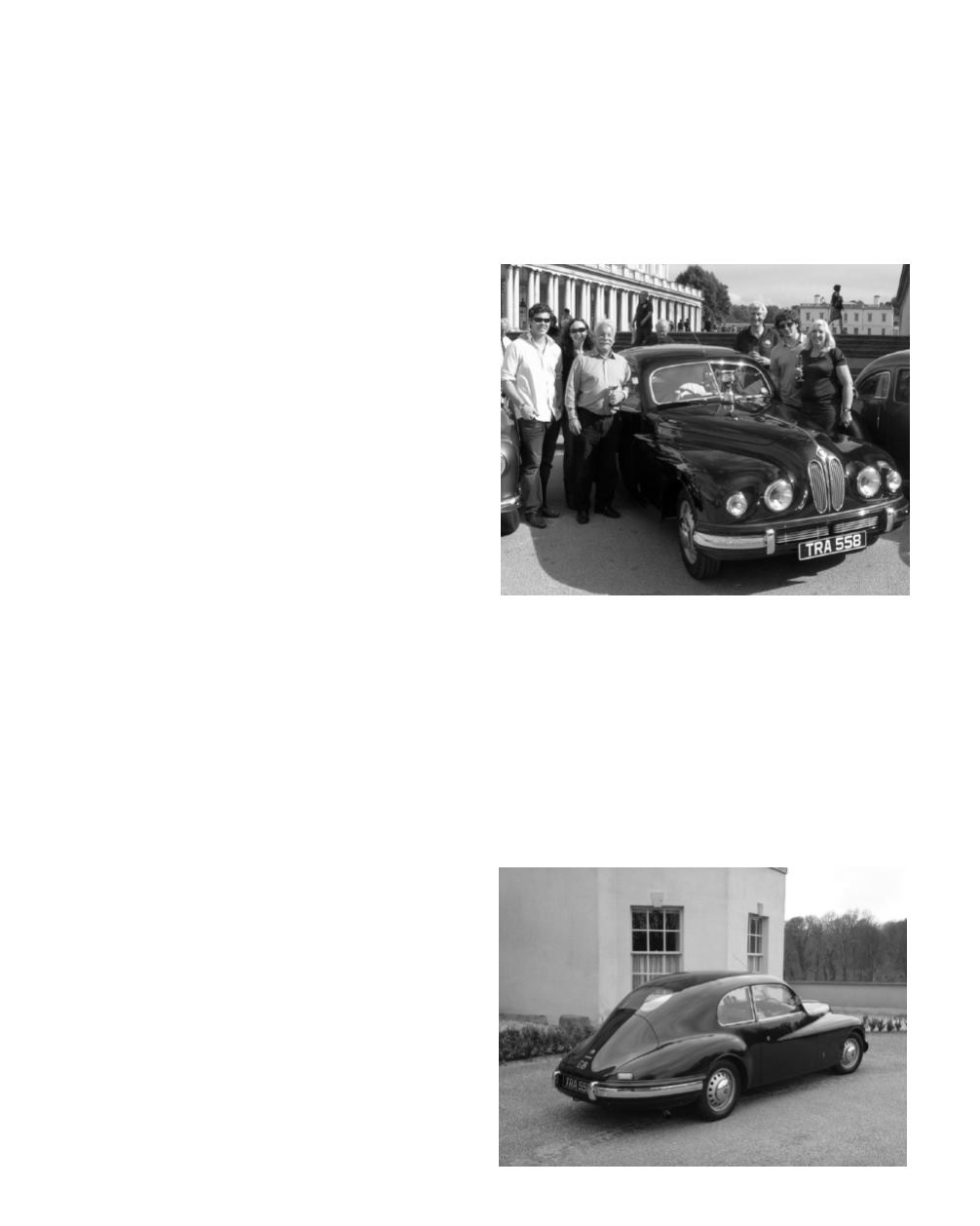
149
Bo r l a s i a n 2 0 1 3
Old Borlasians
did that day? One glance at, for example, the National
School’s Regatta results in last year’s journal – eight
medals – makes me think that the young rowers of today
would find one solitary silver cup not much to crow about.
In the early years of Borlase rowing winning one cup was
an outstanding success!
A few years ago I returned to Marlow on the day of the
annual rowing regatta with the Old Borlasians and
watched as a school eight was named in honour of Russell
Sage. He was one of my “Men of Men” (Old Borlasian
Magazine 1997) and in my view was the foundation for all
the success that the school has had over the years. I know
that that success will continue over the years to come. Well
done to the rowers!
Incidentally I have never rowed in a proper boat since
leaving school!
Ron Ives, A Saxon, 1944-1949
The Robin Pitman Legacy
An iconic motor car from the Fifties
I spent many pleasant and interesting years at the school
during the Fifties, when the school was so small that
you soon knew the name of everyone in the school. The
school had all male staff and pupils and we had “fagging”
which involved juniors serving the upper school and staff
lunches. In the fourth year these duties ceased and a new
found seniority was recognised as seniors could wear long
trousers. There were many charismatic teachers, such as
Mr Davenport, Mr Sage and to me the Art Master, Robin
Pitman, who was the most inspirational. It was not just his
avant-garde mode of dress but the fact that he discovered
Carnaby Street before it was discovered by anyone else.
This led us pupils to visit the area and acquire attire rather
in contrast to the sober school uniform of that era.
It is not totally surprising therefore when one day Robin
arrived at the small car park close to the cloisters entrance
with a brand new Bristol 403 car in a silver grey colour.
The impact of this, then supercar, which was the price of
three Jaguar cars at the time, was awe-inspiring for young
teenage boys obsessed with motor transport of any kind.
He was easily persuaded to give us a design tutorial on
the finer points of the model, informing us that it was the
first wind tunnel tested production car and that the car
maker was the Bristol Aeroplane company who diversified
into car manufacturing after the Second World War. The
aerodynamic shape is as startling today as it was in 1953
and Robin waxed lyrically about such features as the
integral bumpers, faired in lights, and the push button
door handles which reduced wind resistance. He was also
knowledgeable about the construction and technical
details, explaining that the bodywork was of
Superleggara
construction that is aluminium skin over a hollow steel tube
framework, which reduced the weight of the vehicle.
We boys however, impressed as we were by the design
concept and interested to hear that the model was known
as the Aerodyne amongst car enthusiasts, were anxious to
know the performance figures. Robin was able to furnish
us with this information, and the figures seemed very
impressive for the time, when the average car struggled
to reach 70 mph and the 0- 60mph was almost in triple
figures. The performance figures we found very impressive
with a top speed of 107mph quoted and a 0-60 time of
13.2 seconds and a recommended maximum continuous
cruising speed of 97mph. Not surprisingly 20 young boys
all lusted after owning such a vehicle one day.


